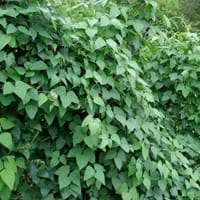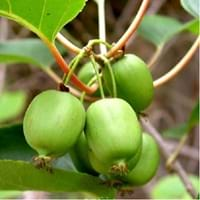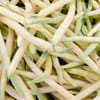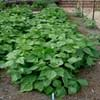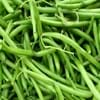Life Span
Annual
Perennial
Origin
Central America, South America
Eastern Asia
Types
Willow Leaf, Sieva Lima, Dixie Speckled
Actinidia arguta, Actinidia giraldii, Actinidia hypoleuca
Number of Varieties
Not Available
Habitat
Humid climates, Subtropical climates, Warmer regions
Dappled Shade, open Woodlands
USDA Hardiness Zone
6-11
3-8
AHS Heat Zone
Not Available
8-1
Sunset Zone
Not Available
1a, 1b, 2a, 2b, 3a, 3b, 4, 5, 6, 7, 8, 9, 14, 15, 16, 17, 18, 19, 20
Habit
Vining/Climbing
Vining/Climbing
Minimum Width
Not Available
Flower Color
White, Ivory
White, Ivory
Flower Color Modifier
Bicolor
Bicolor
Fruit Color
Green
Green, Yellow green
Leaf Color in Spring
Green
Green, Dark Green
Leaf Color in Summer
Green
Dark Green
Leaf Color in Fall
Green
Dark Green
Leaf Color in Winter
Green
Light Green
Leaf Shape
Willow-shaped
Oval
Plant Season
Not Available
Spring, Summer, Fall
Sunlight
Full Sun
Full Sun, Partial Sun
Type of Soil
Loam, Sand
Loam
The pH of Soil
Acidic, Neutral, Alkaline
Neutral
Soil Drainage
Well drained
Well drained
Bloom Time
Indeterminate
Spring, Late Spring, Early Summer
Tolerances
Drought
Shade areas
Where to Plant?
Container, Ground, Pot
Ground, Pot
How to Plant?
Seedlings
Grafting, Stem Cutting
Plant Maintenance
High
Low
Watering Requirements
Allow to dry out slightly between watering, Do Not over Water, Requires regular watering
Average Water Needs, Requires regular watering
In Summer
Not so frequently
Regular watering required
In Spring
Alternate Days
Moderate
In Winter
Drought Tolerant
Average Water
Soil pH
Acidic, Neutral, Alkaline
Neutral
Soil Type
Loam, Sand
Loam
Soil Drainage Capacity
Well drained
Well drained
Sun Exposure
Full Sun
Full Sun, Partial Sun
Pruning
Prune to control growth
Remove damaged leaves, Remove dead branches, Remove dead leaves
Fertilizers
organic fertlizers
Apply 10-10-10 amount, fertilize twice a year
Pests and Diseases
Aphids, Armyworm, Bean rust, Bean weevils, Corn earworm, Cucumber beetles, Curly top, Damping off, Darkling beetles, Earwigs, Fusarium root rot, Grasshoppers, Leafhoppers, Loopers, Lycaenid pod borers, Lygus bugs, Mosaic viruses, Nematodes, Powdery mildew, Saltmarsh caterpillar, Seedcorn maggot, Slugs, Snails, Spider mites, Stink bugs, Thripes, White mold, Whiteflies
Botrytis head rot, Japanese Beetles, Leaf Rollers, Nematodes, Phytophthora, Root rot, Sclerotinia blight, Spider mites, Thripes
Plant Tolerance
Drought
Shade areas
Flowers
Insignificant
Showy
Flower Petal Number
Single
Single
Fragrant Flower
Not Available
Yes
Fragrant Fruit
Not Available
Yes
Fragrant Leaf
Not Available
No
Fragrant Bark/Stem
Not Available
No
Showy Bark
Not Available
No
Foliage Texture
Medium
Medium
Foliage Sheen
Matte
Glossy
Self-Sowing
Not Available
No
Attracts
Not Available
Cats
Allergy
Not Available
Not Available
Aesthetic Uses
Not Available
Cottage Garden
Beauty Benefits
Not Available
Not Available
Environmental Uses
Not Available
Shadow Tree
Medicinal Uses
cholesterol-lowering, constipation, Digestive disorders, Fiber, Heart problems
Antioxidants, Fiber, Folate, Rich in Potassium, Vitamin C
Part of Plant Used
Seeds
Fruits
Other Uses
Used As Food
Grown for shade
Used As Indoor Plant
No
No
Used As Outdoor Plant
Yes
Yes
Garden Design
Edible, Herb, Vegetable
Edible, Feature Plant, Vine
Botanical Name
PHASEOLUS lunatus
ACTINIDIA arguta
Common Name
Butter Bean, Lima Bean
Hardy Kiwi
In Hindi
सेम फली
हार्डी कीवी
In German
Limabohne
Hardy Kiwi
In French
Haricot de Lima
kiwai
In Spanish
Haba
kiwi hardy
In Greek
Γίγαντας
σκληραγωγημένα ακτινίδια
In Portuguese
feijão-Lima
kiwi Hardy
In Polish
Lima Bean
hardy kiwi
In Latin
Lima Bean
Hardy kiwi
Phylum
Tracheophyta
Magnoliophyta
Class
Magnoliopsida
Magnoliopsida
Family
Fabaceae
Actinidiaceae
Genus
Phaseolus
Actinidia
Clade
Angiosperms, Eudicots, Rosids
Angiosperms, Asterids, Eudicots
Tribe
Phaseoleae
Not Available
Subfamily
Faboideae
Actinidiaceae
Number of Species
Not Available
Not Available
Importance of Lima Bean and Hardy Kiwi
Want to have the most appropriate plant for your garden? You might want to know the importance of Lima Bean and Hardy Kiwi. Basically, these two plants vary in many aspects. Compare Lima Bean and Hardy Kiwi as they differ in many characteristics such as their life, care, benefits, facts, etc. Every gardener must at least have the slightest clue about the plants he wants to plant in his garden. Compare their benefits, which differ in many ways like facts and uses. The medicinal use of Lima Bean is cholesterol-lowering, constipation, Digestive disorders, Fiber and Heart problems whereas of Hardy Kiwi is Antioxidants, Fiber, Folate, Rich in Potassium and Vitamin C. Lima Bean has beauty benefits as follows: Not Available while Hardy Kiwi has beauty benefits as follows: Not Available.
Compare Facts of Lima Bean vs Hardy Kiwi
How to choose the best garden plant for your garden depending upon its facts? Here garden plant comparison will help you to solve this query. Compare the facts of Lima Bean vs Hardy Kiwi and know which one to choose. As garden plants have benefits and other uses, allergy is also a major drawback of plants for some people. Allergic reactions of Lima Bean are Not Available whereas of Hardy Kiwi have Not Available respectively. Having a fruit bearing plant in your garden can be a plus point of your garden. Lima Bean has no showy fruits and Hardy Kiwi has no showy fruits. Also Lima Bean is not flowering and Hardy Kiwi is not flowering . You can compare Lima Bean and Hardy Kiwi facts and facts of other plants too.
